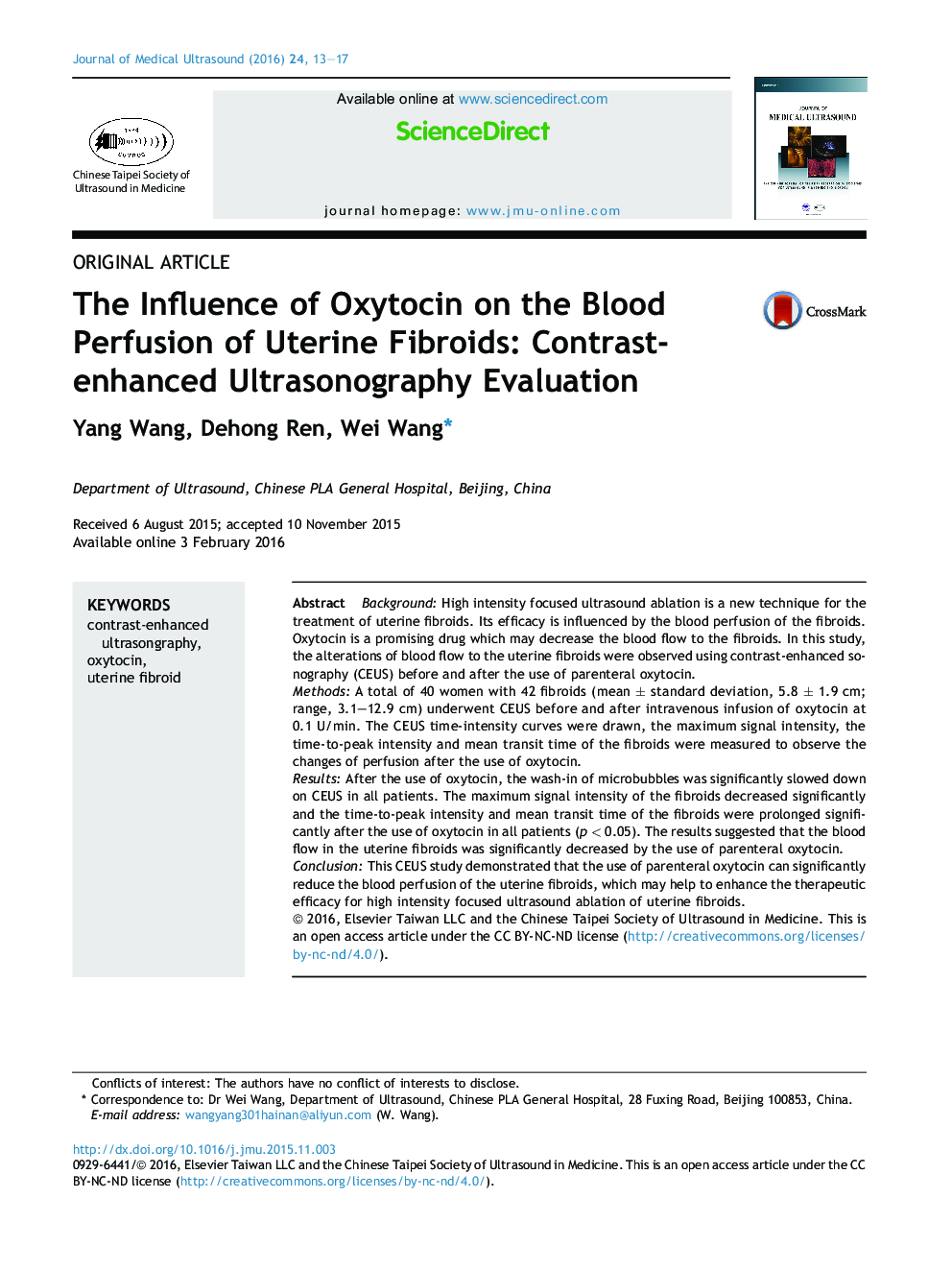| Article ID | Journal | Published Year | Pages | File Type |
|---|---|---|---|---|
| 4232919 | Journal of Medical Ultrasound | 2016 | 5 Pages |
BackgroundHigh intensity focused ultrasound ablation is a new technique for the treatment of uterine fibroids. Its efficacy is influenced by the blood perfusion of the fibroids. Oxytocin is a promising drug which may decrease the blood flow to the fibroids. In this study, the alterations of blood flow to the uterine fibroids were observed using contrast-enhanced sonography (CEUS) before and after the use of parenteral oxytocin.MethodsA total of 40 women with 42 fibroids (mean ± standard deviation, 5.8 ± 1.9 cm; range, 3.1–12.9 cm) underwent CEUS before and after intravenous infusion of oxytocin at 0.1 U/min. The CEUS time-intensity curves were drawn, the maximum signal intensity, the time-to-peak intensity and mean transit time of the fibroids were measured to observe the changes of perfusion after the use of oxytocin.ResultsAfter the use of oxytocin, the wash-in of microbubbles was significantly slowed down on CEUS in all patients. The maximum signal intensity of the fibroids decreased significantly and the time-to-peak intensity and mean transit time of the fibroids were prolonged significantly after the use of oxytocin in all patients (p < 0.05). The results suggested that the blood flow in the uterine fibroids was significantly decreased by the use of parenteral oxytocin.ConclusionThis CEUS study demonstrated that the use of parenteral oxytocin can significantly reduce the blood perfusion of the uterine fibroids, which may help to enhance the therapeutic efficacy for high intensity focused ultrasound ablation of uterine fibroids.
